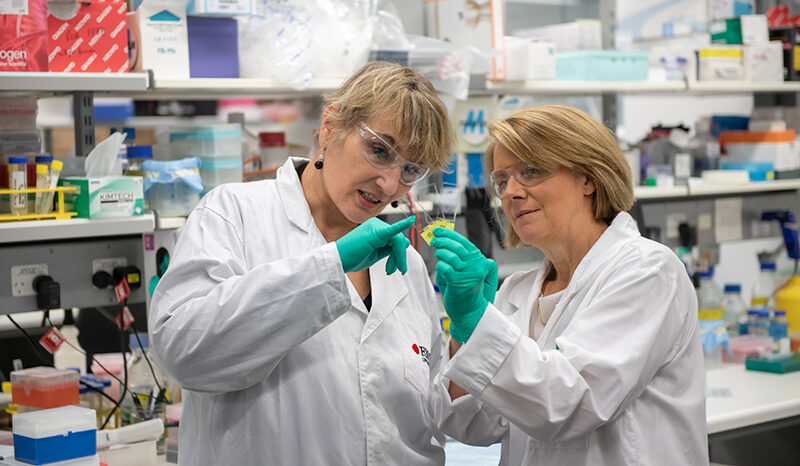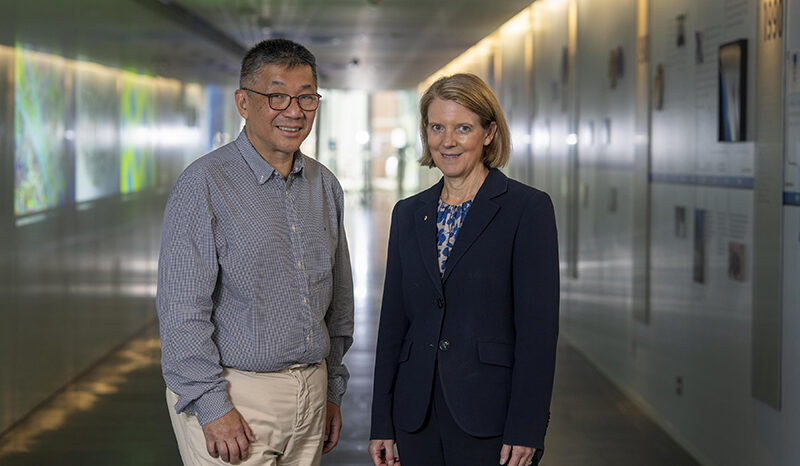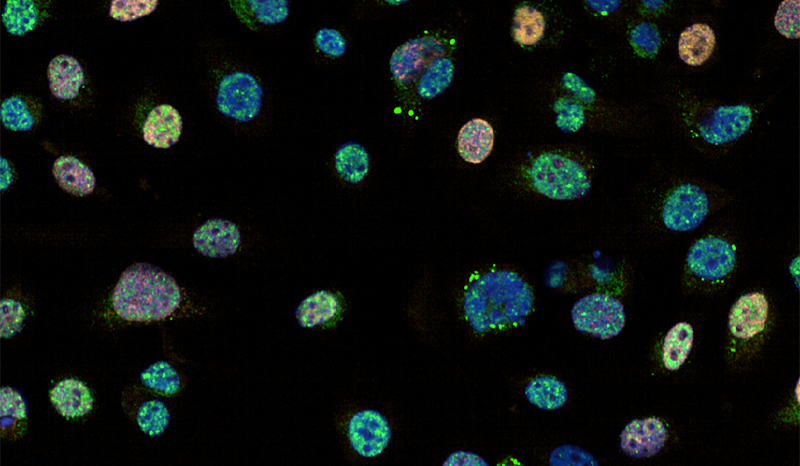Nesic K, Krais JJ, Wang Y, Vandenberg CJ, Patel P, Cai KQ, Kwan T, Lieschke E, Ho G-Y, Barker HE, Bedo J, Casadei S, Farrell A, Radke M, Shield-Artin K, Penington JS, Geissler F, Kyran E, Betsch R, Xu L, Zhang F, Dobrovic A, Olesen I, Kristeleit R, Oza A, McNeish I, Ratnayake G, Traficante N, DeFazio A, Bowtell DDL, Harding TC, Lin K, Swisher EM, Kondrashova O, Scott CL, Johnson N, Wakefield MJ. BRCA1 secondary splice-site mutations drive exon-skipping and PARP inhibitor resistance. Molecular Cancer. 2024;23(1):10.1186/s12943-024-02048-1
Xu H, Gitto SB, Ho G-Y, Medvedev S, Shield-Artin K, Kim H, Beard S, Kinose Y, Wang X, Barker HE, Ratnayake G, Hwang W-T, Study AOC, Hansen RJ, Strouse B, Milutinovic S, Hassig C, Wakefield MJ, Vandenberg CJ, Scott CL, Simpkins F. CHK1 inhibitor SRA737 is active in PARP inhibitor resistant and CCNE1 amplified ovarian cancer. iScience. 2024;27(7):10.1016/j.isci.2024.109978
Smith RA, Slocombe J, Cockwill J, Minas K, Kiossoglou G, Gray K, Lawrence W, Iddles M, Scott C, O’Reilly LA. Patient and public involvement in preclinical and medical research: Evaluation of an established programme in a Discovery‐Based Medical Research Institute. Health Expectations. 2024;27(1):10.1111/hex.13968
Geissler F, Nesic K, Kondrashova O, Dobrovic A, Swisher EM, Scott CL, J Wakefield M. The role of aberrant DNA methylation in cancer initiation and clinical impacts. Therapeutic Advances in Medical Oncology. 2024;16:10.1177/17588359231220511
Abdelmogod A, Papadopoulos L, Riordan S, Wong M, Weltman M, Lim R, McEvoy C, Fellowes A, Fox S, Bedő J, Penington J, Pham K, Hofmann O, Vissers JHA, Grimmond S, Ratnayake G, Christie M, Mitchell C, Murray WK, McClymont K, Luk P, Papenfuss AT, Kee D, Scott CL, Goldstein D, Barker HE. A Matched Molecular and Clinical Analysis of the Epithelioid Haemangioendothelioma Cohort in the Stafford Fox Rare Cancer Program and Contextual Literature Review. Cancers. 2023;15(17):10.3390/cancers15174378
Marks ZRC, Campbell NK, Mangan NE, Vandenberg CJ, Gearing LJ, Matthews AY, Gould JA, Tate MD, Wray-McCann G, Ying L, Rosli S, Brockwell N, Parker BS, Lim SS, Bilandzic M, Christie EL, Stephens AN, de Geus E, Wakefield MJ, Ho G-Y, McNally O, McNeish IA, Bowtell DDL, de Weerd NA, Scott CL, Bourke NM, Hertzog PJ. Interferon-ε is a tumour suppressor and restricts ovarian cancer. Nature. 2023;620(7976):10.1038/s41586-023-06421-w
Nesic K, Krais JJ, Vandenberg CJ, Wang Y, Patel P, Cai KQ, Kwan T, Lieschke E, Ho G-Y, Barker HE, Bedo J, Casadei S, Farrell A, Radke M, Shield-Artin K, Penington JS, Geissler F, Kyran E, Zhang F, Dobrovic A, Olesen I, Kristeleit R, Oza A, Ratnayake G, Traficante N, Study AOC, DeFazio A, Bowtell DDL, Harding TC, Lin K, Swisher EM, Kondrashova O, Scott CL, Johnson N, Wakefield MJ. BRCA1 secondary splice-site mutations drive exon-skipping and PARP inhibitor resistance. 2023;:10.1101/2023.03.20.23287465
Vandenberg CJ, Rybinski K, Nesic K, Lim R, Neagle C, Ho G-Y, Ratnayake G, Papenfuss AT, Furuuchi K, Barker HE, Scott CL. Preclinical testing of farletuzumab ecteribulin (FZEC [MORAb-202]) and MORAb-109, folate receptor α and mesothelin targeting antibody-drug conjugates (ADCs), in rare gynecologic cancers.Journal of Clinical Oncology. 2023;41(16_suppl):10.1200/jco.2023.41.16_suppl.e17634
Sjoquist KM, Dobrovic A, Robledo K, Baron-Hay SE, Ananda S, McCarthy NJ, Goh JC, Murray N, Steer CB, Yip S, Mileshkin LR, Kondrashova O, Fink JL, Chang G, Bailey L, Lee Y, Zebic DS, Vandenberg CJ, Scott CL, Waring PM. Olaparib in HR-deficient (HRD), metastatic triple-negative breast cancer (TNBC) and relapsed ovarian cancer (ROC) without germline mutations in BRCA1 or BRCA2: Phase 2 EMBRACE trial.Journal of Clinical Oncology. 2023;41(16_suppl):10.1200/jco.2023.41.16_suppl.e15079
Dall G, Vandenberg CJ, Nesic K, Ratnayake G, Zhu W, Vissers JHA, Bedő J, Penington J, Wakefield MJ, Kee D, Carmagnac A, Lim R, Shield-Artin K, Milesi B, Lobley A, Kyran EL, O’Grady E, Tram J, Zhou W, Nugawela D, Stewart KP, Caldwell R, Papadopoulos L, Ng AP, Dobrovic A, Fox SB, McNally O, Power JD, Meniawy T, Tan TH, Collins IM, Klein O, Barnett S, Olesen I, Hamilton A, Hofmann O, Grimmond S, Papenfuss AT, Scott CL, Barker HE. Targeting homologous recombination deficiency in uterine leiomyosarcoma. Journal of Experimental & Clinical Cancer Research. 2023;42(1):10.1186/s13046-023-02687-0





